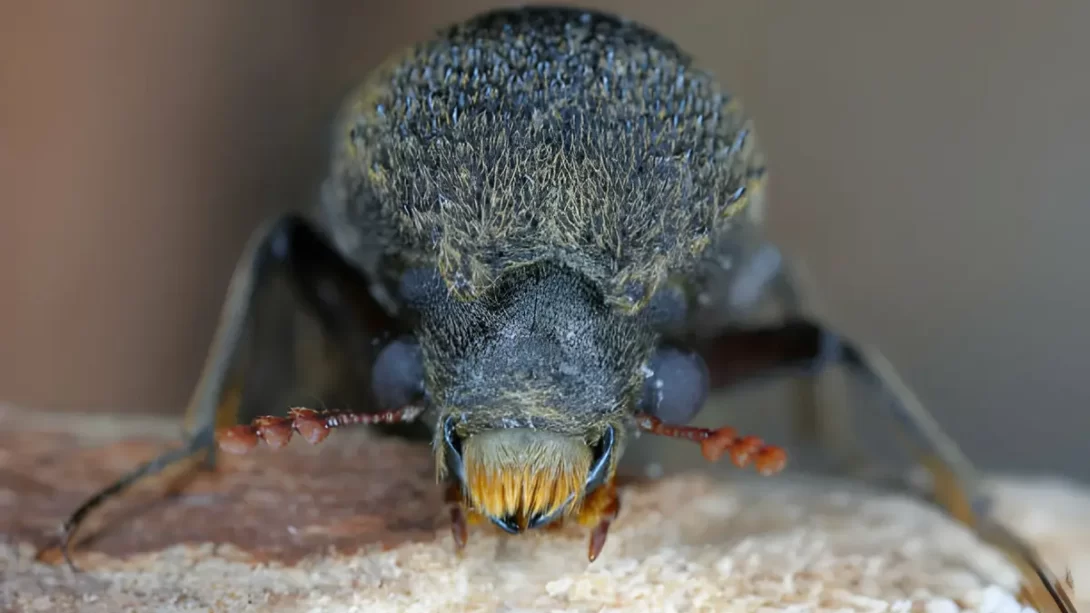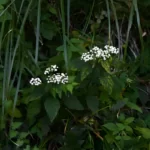Powder post beetles are a common nuisance in homes, known for their ability to damage wooden structures and furniture. Eliminating these pests is crucial to preserve the integrity of wood in homes and other buildings. While various methods are employed to control these beetles, there’s growing interest in using vinegar as a potential natural treatment. This article explores whether vinegar is effective against powder post beetles and how it compares to other control methods.
Powder Post Beetles
Powder post beetles are small, wood-boring insects that can cause significant damage to untreated wood. They typically infest hardwoods, such as oak, walnut, and cherry. The most apparent sign of an infestation is the presence of fine, powdery sawdust, along with small exit holes in the wood surface. These beetles have a complete life cycle that includes egg, larval, pupal, and adult stages, with the larvae causing the most damage as they feed on wood.
The extent of damage caused by powder post beetles can vary but is often significant, especially if the infestation is not detected early. Over time, these beetles can weaken structural timbers, flooring, and antique furniture, making timely and effective control measures essential.
Traditional Methods for Controlling Powder Post Beetles
Conventionally, controlling powder post beetles involves chemical and physical treatments. Chemical treatments typically include the application of insecticides that penetrate the wood and kill the larvae. These insecticides can be effective but may raise concerns about toxicity and environmental impact.
Physical methods, such as heat treatment and freezing, are also used. Heat treatment involves heating the infested wood to a temperature that kills the beetles without damaging the wood. Freezing, conversely, involves exposing the wood to sub-zero temperatures to eradicate the beetles. While effective, these methods can be impractical for large or fixed structures and may require professional assistance.
Powder post beetles are a common nuisance in homes, known for their ability to damage wooden structures and furniture. Eliminating these pests is crucial to preserve the integrity of wood in homes and other buildings. While various methods are employed to control these beetles, there’s growing interest in using vinegar as a potential natural treatment. This article explores whether vinegar is effective against powder post beetles and how it compares to other control methods.
Vinegar as a Treatment for Powder Post Beetles
Vinegar, particularly white vinegar, is often touted as a natural solution for various pest problems, including powder post beetles. The acetic acid in vinegar is believed to act as a natural pesticide. Its efficacy against powder post beetles, however, is a subject of debate. Vinegar might deter adult beetles to some extent but its effectiveness in killing larvae inside the wood is questionable. Unlike chemical treatments, vinegar does not deeply penetrate wood, which is essential for reaching and eliminating the larvae that cause the most damage.
The scientific basis for using vinegar against wood-boring beetles is limited. While vinegar can create an inhospitable environment for many pests due to its acidic nature, there is little evidence to suggest it can effectively eradicate an established powder post beetle infestation.
How to Apply Vinegar for Powder Post Beetle Infestations
Despite the limitations, if you choose to use vinegar as a preventative measure or in conjunction with other methods, here’s how you can apply it:
- Prepare the Solution: Mix equal parts of white vinegar and water. Some recommend adding a few drops of dish soap to improve adherence to the wood surface.
- Test on a Small Area: Before applying broadly, test the vinegar solution on a small, inconspicuous area of the wood to ensure it doesn’t cause discoloration or damage.
- Apply to Affected Areas: Use a spray bottle to apply the solution generously to the infested wood. Focus on areas where you notice exit holes or sawdust.
- Reapply as Needed: Given vinegar’s limited penetration, regular reapplication may be necessary. However, frequent use of vinegar can also damage the wood, so monitoring the affected area is crucial.
- Safety Precautions: While vinegar is generally safe, it’s advisable to use gloves and ensure adequate ventilation during application.
Alternative Natural Remedies and Preventative Measures
In addition to vinegar, other natural remedies can help manage powder post beetle populations. These include neem oil, borate-based treatments, and essential oils like cedarwood or orange oil. While these methods can be more eco-friendly, their effectiveness varies and often depends on the extent of the infestation.
Preventative measures are crucial in controlling powder post beetles. Regularly inspecting wood items, maintaining proper wood moisture levels, and using kiln-dried wood can significantly reduce the risk of infestation. Additionally, applying a sealant to wood surfaces can deter beetles from laying eggs.
When to Seek Professional Help
While DIY methods can be effective for minor infestations, there are situations where professional pest control is necessary. If you’re dealing with a widespread infestation, particularly in structural elements of your home, it’s time to consult a professional. This is especially important when the integrity of the wood is compromised, posing safety risks.
Professional pest control services have access to more potent insecticides and treatment methods that can penetrate deep into the wood, reaching the larvae effectively. They can also provide customized solutions based on the specific type and extent of your infestation. When selecting a pest control provider, look for licensed, experienced professionals who use environmentally responsible methods.
Conclusion
In conclusion, while vinegar can serve as a natural deterrent and may be used for minor pest issues, its effectiveness against powder post beetles, particularly in eradicating larvae within wood, is limited. For more substantial infestations, combining natural remedies with professional treatments is often the most effective approach.
Preventative measures such as regular inspections, proper wood storage, and moisture control are key to avoiding powder post beetle problems. Remember, early detection and a combination of treatment methods are crucial for effectively managing these pests.
If you find yourself facing a significant infestation, don’t hesitate to seek professional help. This ensures not only the preservation of your wooden structures but also contributes to a safer and more comfortable living environment.




